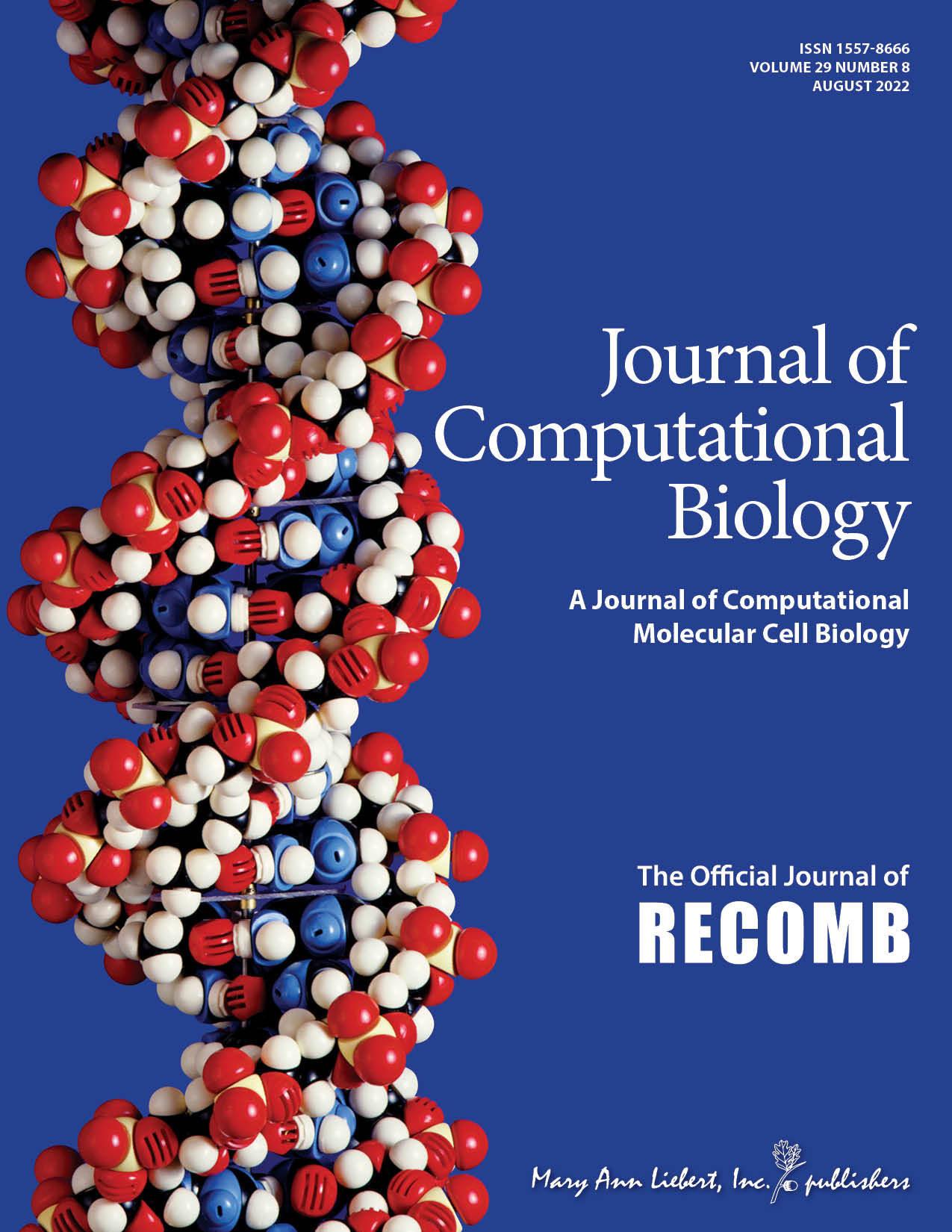Aims & Scope
Journal of Computational Biology publishes articles whose primary contributions are the development and application of new methods in computational biology, including algorithmic, statistical, mathematical, machine learning and artificial intelligence contributions. The journal welcomes novel methods that tackle established problems within computational biology; novel methods and frameworks that anticipate new problems and data types arising in computational biology; and novel methods that are inspired from studying natural computation. Methods should be tested on real and/or simulated biological data whenever feasible. Papers whose primary contributions are theoretical are also welcome. Available only online, this is an essential journal for scientists and students who want to keep abreast of developments in bioinformatics and computational biology.
Research Articles: Research articles describe new methodology development and application in computational biology. It is recommended that manuscripts should be approximately 3,000 words, excluding tables, figures, legends, abstract, disclosure or references; longer articles can also be submitted. Research articles should include the following sections, in order: abstract, introduction, methods, results, discussion and references.
Software articles: Short 2-4 page articles describing implementations of new or recently developed computational methods for applications in computational biology. The approaches underlying the software should have methodologically interesting components. Software articles can be published as companion articles to primary research articles which describe the main methodological contributions. Software article submissions should be accompanied by a cover letter that concisely states the novel implementation and algorithmic challenges the software tackles.
*Research and software articles should report unique findings not previously published.
Tutorials: These articles highlight important concepts in computational biology. The journal especially welcomes tutorials on algorithms, data structures, machine learning paradigms, and other computational formalisms that are newly being utilized in computational biology. Prospective contributors should contact the journal (jcb@liebertpub.com) with brief outlines before proceeding.
Reviews: Brief outlines from prospective contributors are welcome, and these will also be solicited on specific subjects. Articles that benchmark existing approaches are also welcome.
News/Perspectives/Book Reviews: These article types should typically be 2–4 pages long. Contacting the journal before beginning such a paper is suggested.
Conference and other special issues: The Journal of Computational Biology welcomes proposals for special issues related to topics within the scope of the journal.
Journal of Computational Biology coverage includes:
- Algorithms for computational biology
- Mathematical modeling and simulation
- AI / Machine learning
- Statistical formulations
- Software for applied bioinformatics
- Genomics and systems biology
- Evolution and population genomics
- Biomedical applications
- Biocomputing and biology-inspired algorithms
Specific topics of interest include, but are not limited to:
- Molecular sequence analysis
- Sequencing and genotyping technologies
- Regulation and epigenomics
- Transcriptomics, including single-cell
- Metagenomics
- Population and statistical genetics
- Evolutionary, compressive and comparative genomics
- Structure and function of non-coding RNAs
- Computational proteomics and proteogenomics
- Protein structure and function
- Biological networks
- Computational systems biology
- Privacy of biomedical data
- Bioimaging
Journal of Computational Biology is under the editorial leadership of Editor-in-Chief Mona Singh, PhD, Princeton University; and other leading investigators. View the entire editorial board.
Audience: Computational biologists, bioinformaticians, data scientists, applied mathematicians, and computer scientists, among others.
Indexing/Abstracting:
- PubMed/MEDLINE
- PubMed Central
- Web of Science: Science Citation Index Expanded™ (SCIE)
- Scopus
- Current Contents®/Life Sciences
- Biotechnology Citation Index®
- Biological Abstracts
- BIOSIS Citation Index™
- Journal Citation Reports/Science Edition
- EMBASE/Excerpta Medica
- Chemical Abstracts
- ProQuest databases
- CAB Abstracts
- Global Health
- MathSciNet
- The DBLP Computer Science Bibliography
- BenchSci

